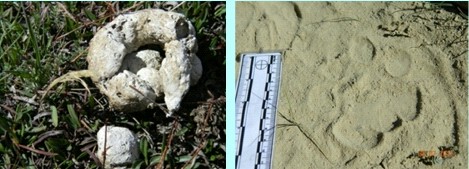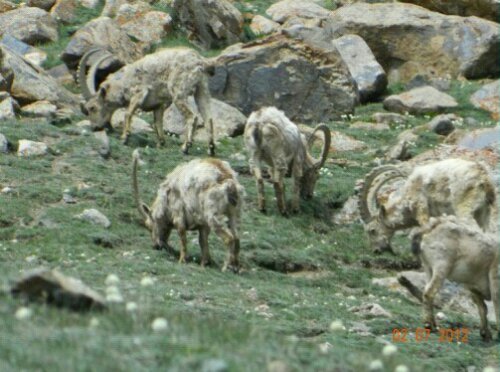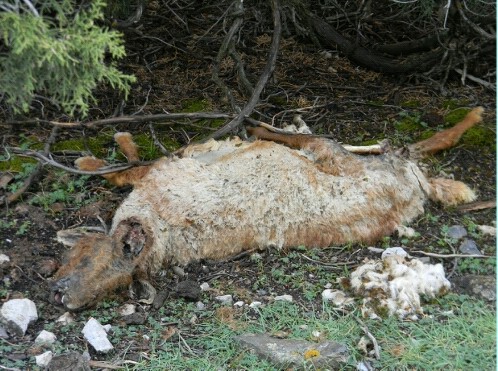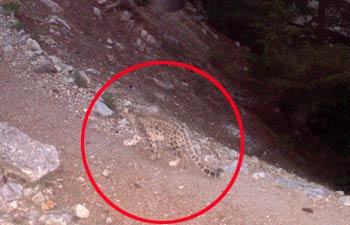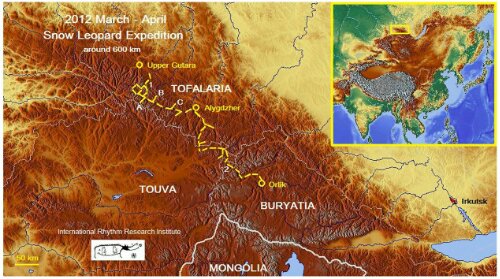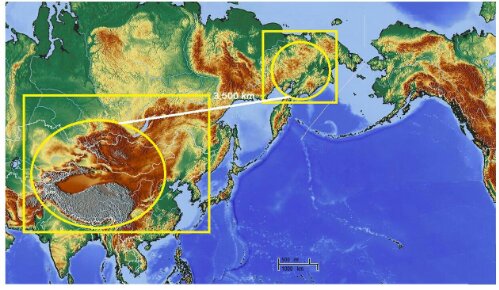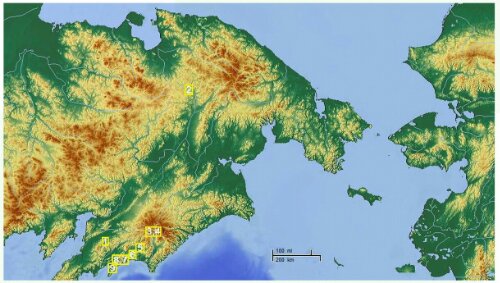Congratulations to Yash Veer in publishing this piece in the Deccan Herald.
May 22, 2012:
Yash Veer Bhatnagar charts out the efforts of The Snow Leopard Trust and other organisations in unravelling the mysteries of the elusive snow cat.
‘Stones of Silence’, a classic by the renowned naturalist George Schaller changed me forever. I knew that I wanted to work in the high Himalaya and study the ‘mountain monarchs’, the herbivores of the high mountains.
Sighting the snow leopard appeared far-fetched, as Schaller’s travels over several hundred kilometres had just yielded one or two sightings. He called it the grey ghost of the Himalaya… Little did I know 20 years ago that snow leopard conservation would be my main job!
Snow leopards are medium-sized cats and since they don’t roar, they weren’t clubbed with the other large cats, but given a genus of their own, Uncia. Recent genetic studies place them closer to the tiger than the leopard, and taxonomists have renamed them Panthera uncia.
Overall, the range of snow leopards spans an estimated 1.3 lakh sq. km in India, which is about six per cent of the global range. The Indian territory, however, is estimated to house about 10 per cent of the global population.
Since the mid 1980s, some studies by the Snow Leopard Trust (SLT), Wildlife Institute of India (WII) and other organisations have tried to unravel the mysteries of this elusive cat. However, these initial investigations couldn’t yield much on the species, except some useful tools to monitor them – counting signs along landform edges, marking posts of the snow leopard. It is with the advent of camera trapping that some hope emerged to get a clearer picture of the species’ abundance.
Around the same time, the emergence of satellite and GPS based telemetry to track wildlife species emerged, making it possible to study and understand the movements and resource use of such species. Further, using nuclear DNA that it amplified from scats (faeces) of snow leopards, it is now possible to trace it to the individual, thus enabling population estimates over large landscapes too.
Since the past two decades, researchers from the Nature Conservation Foundation, Mysore (NCF), SLT and the National Centre for Biological Sciences, Bangalore have been involved with studies to understand the species, its prey, human society and threats using both traditional and advanced tools and have been rewarded with some amazing insights on the species.
Snow leopards & their prey
A key revelation was about the occurrences of the snow leopard and its prey. We realised that the entire potential area of snow leopards, from the treeline of the Greater Himalaya to the Trans Himalaya, from east to west, appeared to be occupied by the snow leopard. This region is thus very different from the rest of the forested tracts of the country where wildlife, especially endangered ones, are limited to protected areas (PA) alone. Protected areas in the rest of the country appear to be habitat ‘islands’ in a maze of human dominated landscape, but in the snow leopard areas there may be some valleys better than others, but the habitat appears to be contiguous.
Human use also appears to be pervasive, with the pastoral and agro-pastoral people depending on remote corners of the area for their needs. Human-induced barriers seem to be non-existent in the landscape. We realised that the PAs here, about 31 of them, cover substantial area, but still leave out many areas where good wildlife occurs.
People in much of the range rear livestock and have traded in their products such as meat, wool and cashmere. Due to changes since Independence and a move towards a market economy, these have often resulted in increased numbers of livestock.
Such areas have been overgrazed and degraded, resulting in severe competition with native herbivores resulting in a decline in their populations and even local extinction in some cases. Often this process is linked with increased dependence of snow leopard and other wild carnivores on livestock. The economic losses to people can be severe and can lead to retaliatory killing of the carnivores.
Development, but for whom?
Fortunately, the snow leopard in India shares most of its habitat with Buddhist communities who are usually more tolerant, but there are other parts where wildlife have been hunted and these include parts of Arunachal, Uttarakhand, Kinnaur, Lahaul, and much of J&K, except Ladakh.
A recent and probably more disturbing trend is with development pressures. In the past decade, the border areas are being integrated into the mainstream with better roads, construction work, hydel projects and other infrastructure. Much of this is certainly needed, but with not much manpower available locally, poor migrant labourers from the Indian plains and Nepal are brought in large numbers by contractors and local people. Many of them hunt and collect rare medicinal plants, with serious consequences for conservation.
Tourism is growing in the region and there are some negative impacts from this too. Another recent threat due to increased population of outsiders and the mushrooming tourist facilities is the invasion of an alien predator – the domestic dog.
Traditionally, pastoralists in the region had few, if any dogs, but with the easy availability of garbage and livestock carcasses near villages, feral dog populations have exploded. They are known to attack and kill livestock, pose a threat to humans too, but recently have been seen moving out into the mountains killing wild ungulates and even evicting the snow leopard from their kill.
With such large scale changes taking place in a landscape where snow leopard and its prey occurs almost everywhere, we felt that confining conservation attention to PAs alone is not the best strategy.
We discussed these issues with the forest departments of the five Himalayan states, other expert organisations and the local community through formal consultations and sensed that the conservation scenario was rather bleak and was compounded by limited funds and staff with the forest departments. In Ladakh and Spiti, for example, the ratio of a frontline forest staff to the area he was supposed to take care of, was over 600 sq.km! Most PAs didn’t have management plans and conservation was often ad-hoc.
The big picture
By this time, agencies like NCF-SLT and Snow Leopard Conservancy had been trying out many incentive based conservation programmes to mitigate conflicts and augment local incomes.
Based on the species occurrences and these conservation experiments, we realised that there was a need to restructure conservation of snow leopard and its habitat with a focus away from PAs alone, but in the larger landscape, where we have a landscape vision, but local solutions to threats. These consultations, earlier experiments in the country with participatory conservation and the active involvement of the Ministry of Environment & Forests (MoEF) led to the development of an alternative approach to conservation of the Indian high altitudes, called the Project Snow Leopard (PSL), in 2009.
Under the PSL, it is proposed that each of the five states should identify a large landscape that’s up to 4,000 sq.km. They should then understand species distribution within these areas accurately to identify a mosaic of small ‘core landscape units’, basically areas that have comparatively better wildlife values.
A management plan should be commissioned involving expert scientific organisations and simultaneously structures should be set up in the state to facilitate better participation. It is stressed that many local institutions may already be involved with environment friendly activities such as harnessing renewable energy, awareness camps, green income options and improving capacity.
The management plan hopes to incorporate these areas of ‘convergence’ so that there is a larger buy-in into the conservation process and scarce conservation funds are better used for protection, tackling threats, building capacity and other core activities.
Many agencies apart from NCF-SLT and SLC, such as the Worldwide Fund for Nature, WII and the state governments are taking keen interest in these remote and difficult areas. More and more credible information on snow leopard is now available. Much still needs to be done, but with the new information and approaches, snow leopards look secure in India.
(The writer is Senior Scientist, NCF, Mysore and Director, Snow Leopard Trust-India.)
Source: Deccan Herald
http://www.deccanherald.com/content/251112/on-trail-snow-phantoms.html
